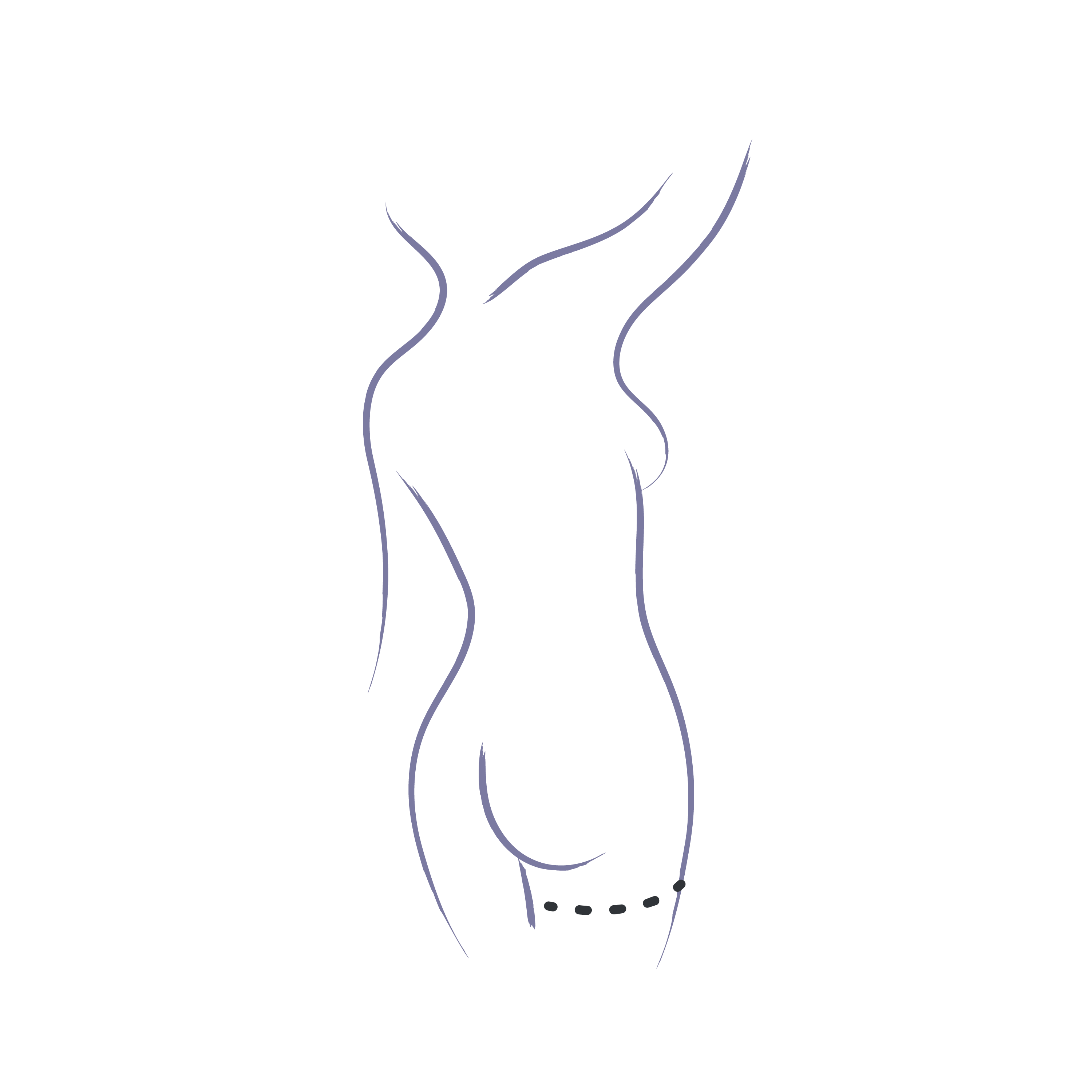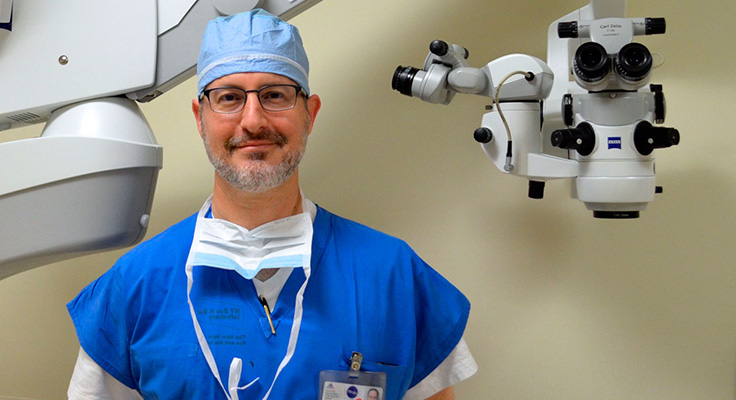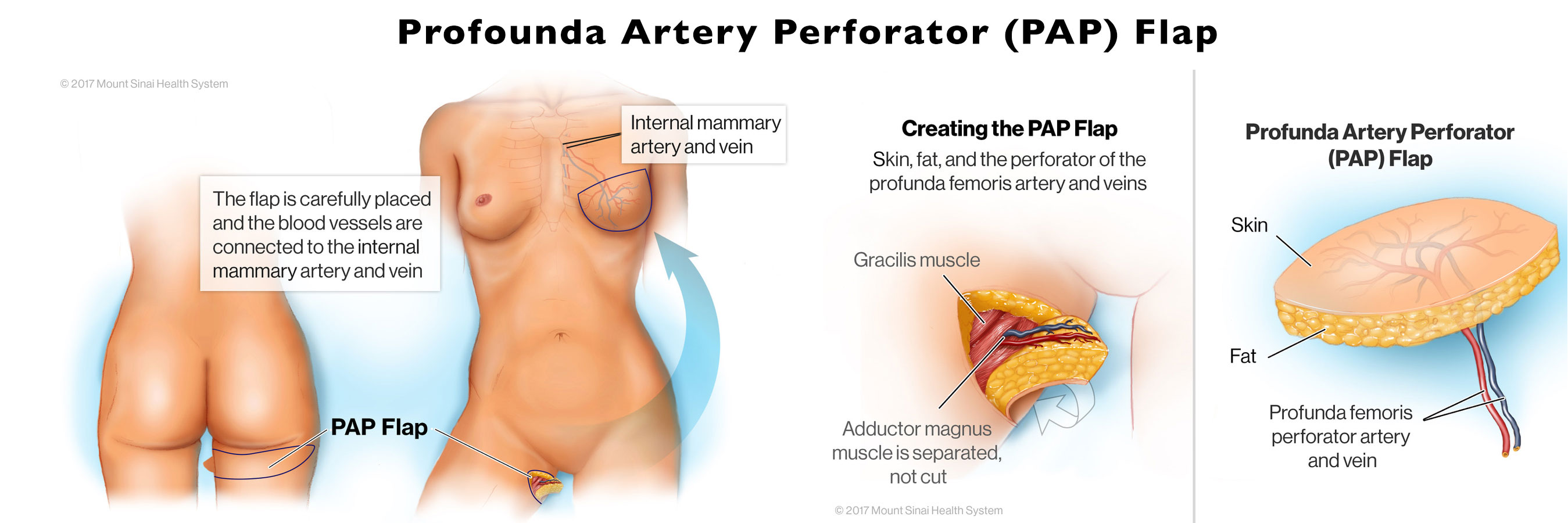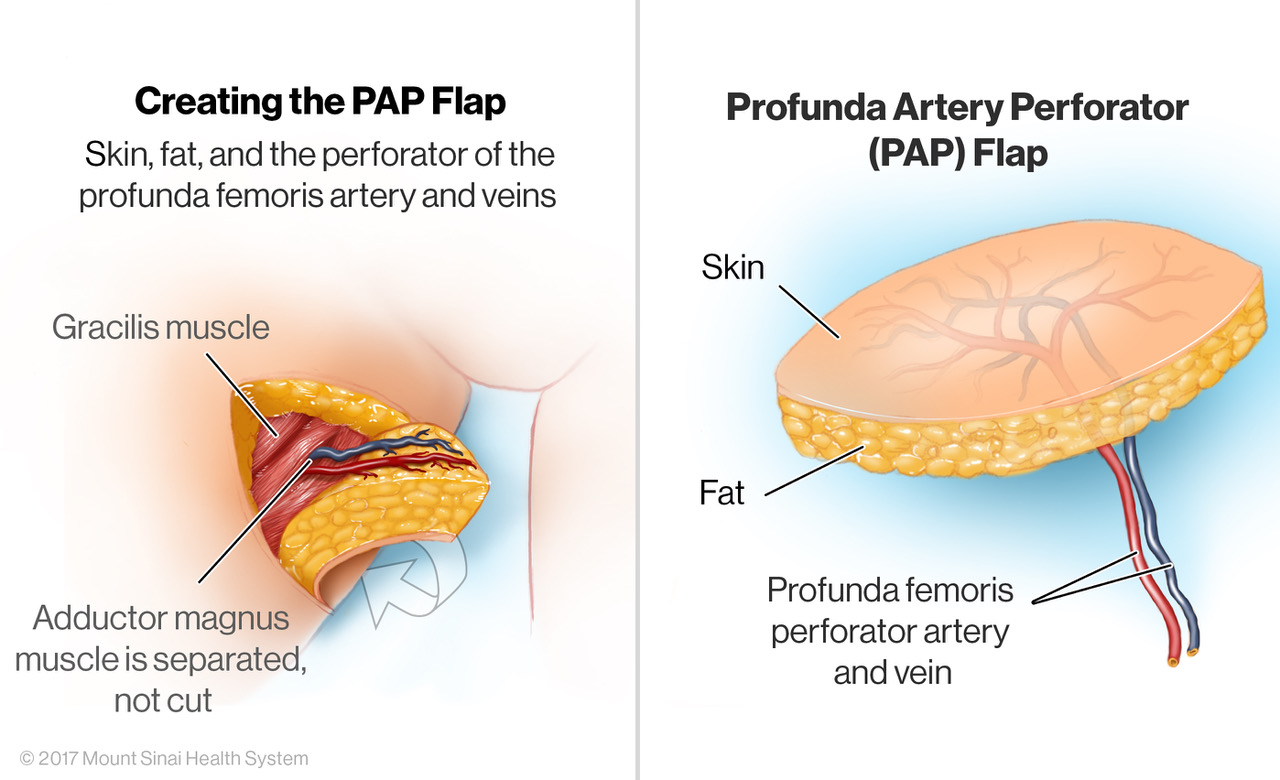Breast Reconstruction
PAP Flap Breast Reconstruction Procedure
This page provides information on PAP flap breast reconstruction, a surgical procedure where tissue from either below the buttock or the posterior inner thigh is utilized to reconstruct the breast following mastectomy. Detailed medical illustrations and video narration are available to help you grasp the procedure effectively.
About PAP Flap Breast Reconstruction

Donor Site: Thigh
There are a number of other options for patients who don’t have enough abdominal tissue to make breasts after a mastectomy.
PAP stands for profounda artery perforator flap. It is the tissue taken from the back of the leg just below the buttock crease.
The tissue is taken from the area sometimes called the “banana roll”. It is a horizontally or vertically designed elipse of skin and fat harvested from either below the buttock or the posterior inner thigh.
Like the DIEP, and all perforator flaps, this operation also spares the underlying muscle. Even very thin women are candidates for this operation. There is no damage to the underlying muscle and the resulting scar is very favorable. Thin women who don’t have a lot of body fat typically do not require much tissue to make a new breast. Therefore, almost everyone who wants this operation is a candidate for it.
Common Questions about the PAP
Flap Breast Reconstruction Procedure
A woman may be considered a candidate for PAP (Profunda Artery Perforator) flap breast reconstruction based on several factors. PAP flap is an autologous breast reconstruction technique that utilizes tissue from the upper thigh. Here are some considerations for candidacy:
- Tissue suitability: A woman should have an adequate amount of excess tissue in the upper thigh area to serve as donor tissue for the PAP flap reconstruction. Dr. Levine will assess the thigh area during a consultation to determine if there is sufficient tissue available for the procedure.
- Vascular anatomy: The presence of suitable blood vessels in the thigh area is crucial for a successful PAP flap reconstruction. Dr. Levine will assess the patient’s vascular anatomy, particularly the profunda artery perforators, which provide blood supply to the skin and fat tissue in the thigh. The presence of adequate perforators is necessary to support the transferred tissue.
A patient may require a PAP (Profunda Artery Perforator) flap instead of a DIEP (Deep Inferior Epigastric Perforator) flap for breast reconstruction due to specific circumstances or considerations. Here are a few reasons why a PAP flap may be chosen over a DIEP flap:
- Insufficient abdominal tissue: In some cases, a patient may not have sufficient excess tissue in the lower abdomen to create a DIEP flap. This can occur if the patient has previously undergone abdominal surgeries or has a naturally thin abdominal wall. In such cases, the PAP flap technique allows the surgeon to utilize tissue from the upper thigh instead of the abdomen, providing an alternative source of autologous tissue for breast reconstruction.
- Abdominal concerns or limitations: Certain conditions or concerns, such as previous abdominal scars, abdominal muscle weakness, or a high risk of complications related to abdominal surgery, may make the use of abdominal tissue less favorable. In such instances, the PAP flap technique offers an alternative that avoids the abdominal area altogether and relies on tissue from the thigh.
Gradually, blood vessels and nerves grow into the transferred tissue. Scars fade, and the end result is a breast reconstruction that looks and feels and behaves exactly like a normal breast. The only difference is that there is no breast tissue inside it, and therefore no risk of breast cancer in the transferred tissue.
The photographs in this section are of actual patients of Dr. Joshua Levine. They have undergone various types of autologous breast reconstruction (perforator free flaps), i.e. DIEP/SIEA, PAP, GAP, delayed, immediate, with nipple-sparing mastectomy, etc. Keep in mind that each patient is unique and results may vary. To view more before & after photos, please contact our office to schedule a consultation.
Natural tissue breast reconstruction has several benefits compared to other methods of breast reconstruction. Here are a few key benefits:
-
- It uses a woman’s own natural tissue, which means that it is less likely to be rejected by the body.
-
- It doesn’t require the use of implants, which can cause complications such as scarring, infection, and hardening of the breast tissue.
-
- It doesn’t sacrifice any muscle, which means that women can retain their natural shape and function.
-
- It can be performed at the same time as a mastectomy, which can save time and reduce the overall number of surgeries that a woman needs to undergo.
-
- It can help women feel more comfortable and confident in their own bodies, which can improve their quality of life.
Overall, natural tissue breast reconstruction can provide women with a more natural and safe option for restoring their breasts after a mastectomy.
“Dr. Levine is an outstanding Doctor. He is a wonderful human being and a highly skilled surgeon. My results are nothing short of miraculous. There is no one like Doctor Levine. He is an artist and a true professional.”

Dr. Joshua L. Levine, MD, FACS
World Leading Authority in Perforator Flap Breast Reconstruction
Based in New York, New Jersey, and Connecticut
Meet Dr. Joshua L. Levine,
World-Renowned in the Art and Science of Natural Tissue Breast Reconstruction
Dr. Joshua Levine is a world-renowned perforator flap breast reconstruction surgeon. Meaning, all of his breast reconstruction procedures, are muscle-sparing, using only your own natural tissue to restore your breast(s).
With his advanced techniques, such as stacked combination flaps, or utilizing the delay phenomenon in staged-immediate reconstruction, all women, no matter how thin and no matter what body type, are candidates for natural tissue, muscle-sparing, implant-free breast reconstruction.
As Seen On: US News & World Report, diepflap.com



